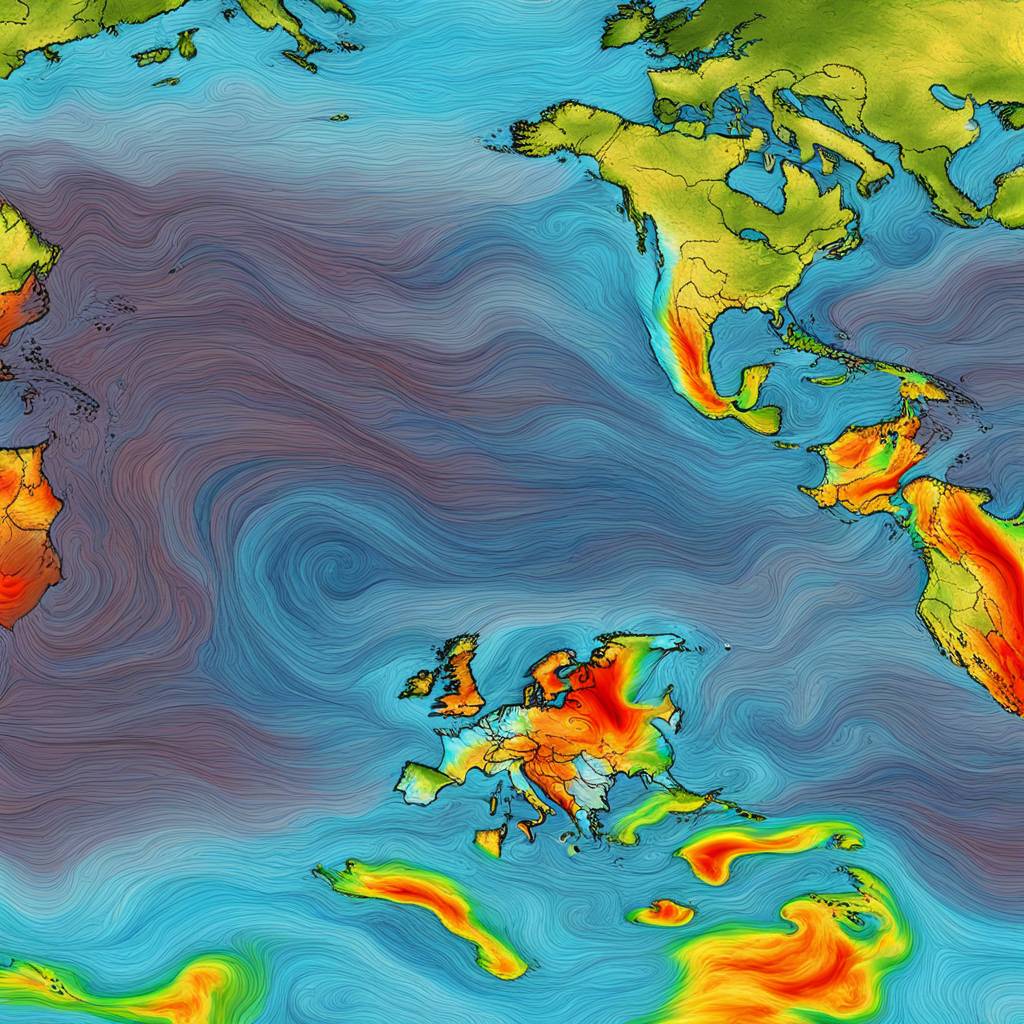The interaction between the oceans and the atmosphere is crucial in shaping the Earth’s climate, as changes in sea surface temperatures can impact the atmosphere and vice versa. This exchange of energy is known as ocean-atmosphere coupling. Researchers from Kyushu University have discovered that ocean-atmosphere coupling enhances teleconnection patterns, which are changes in climate conditions across vast regions of the globe, in the Northern Hemisphere. The team studied the effect of ocean coupling on atmospheric circulation patterns and found that it causes more meandering jet streams, which are linked to extreme weather events.
Ocean-atmosphere coupling is most powerful in the tropics, where it plays a significant role in the El Niño-Southern Oscillation in the equatorial Pacific Ocean. This phenomenon leads to changes in atmospheric circulation patterns, known as teleconnection patterns, in the mid-latitudes. The impact of ocean-atmosphere coupling on teleconnection patterns outside the tropics is less understood but has implications for extreme weather events, especially in the context of the climate crisis.
A recent study published in Communications Earth & Environment led by Assistant Professor Masato Mori from Kyushu University’s Research Institute for Applied Mechanics, in collaboration with other institutions, shed new light on the phenomenon of extratropical ocean-atmosphere coupling. The researchers focused on understanding the mechanisms that form and maintain teleconnection patterns, which are linked to extreme weather events, by conducting simulations during the Northern Hemisphere’s wintertime.
The researchers observed significant changes in atmospheric variables in the North Pacific, subpolar North Atlantic, and northern Eurasia around the Barents-Kara Sea regions in their simulations. These changes indicated shifts in teleconnection patterns compared to simulations without ocean-atmosphere coupling. The heat exchange between the ocean and the atmosphere in the coupled run reduced the air-sea thermal difference, leading to increased kinetic energy and a more meandering jet stream. In contrast, when the oceans are uncoupled, a less meandering jet stream is observed due to larger temperature differences causing more heat to be released.
The study quantified the coupling effect based on large ensemble simulations and revealed how coupling selectively enhances multiple principal modes of variability, not only thermodynamically but also dynamically. Despite potential underestimation of the coupling effect in the simulation, the new insights on the effects of ocean-atmosphere coupling in the Northern Hemisphere could contribute to improving climate projections and climate models in the face of the climate crisis.
Understanding the mechanisms of ocean-atmosphere coupling and its impact on teleconnection patterns is crucial for predicting and mitigating extreme weather events in the Northern Hemisphere. The study by researchers from Kyushu University provides valuable insights into how ocean coupling affects atmospheric circulation patterns and can help improve climate projections in the future. By quantifying the coupling effect and identifying its role in influencing teleconnection patterns, scientists can better understand the complex interactions between the oceans and the atmosphere and their implications for the Earth’s climate.


